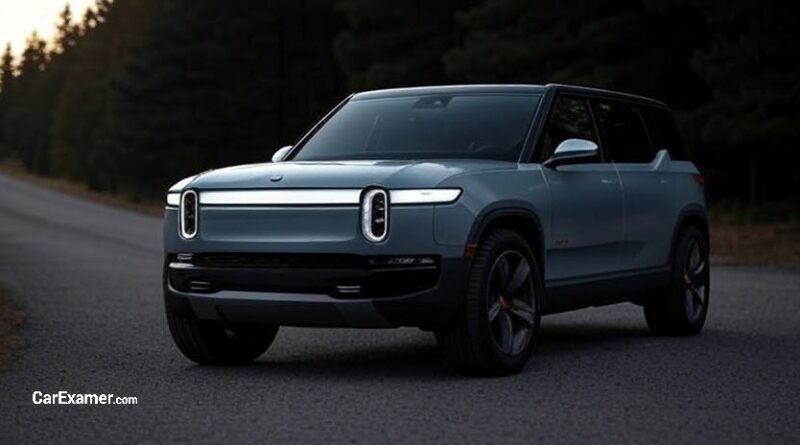Rivian Reports Bigger Loss as Earth Minerals, EV Credits to Blame
Rivian Automotive, the electric vehicle maker best known for its R1T pickup and R1S SUV, has posted a larger-than-expected financial loss for the second quarter of 2025. The results reflect rising production costs, limited access to rare earth materials, and the continued phase-out of federal EV tax incentives. This setback underscores the growing challenges facing EV startups operating in a tightening global economy and increasingly complex supply environment. Let’s have a look why Rivian Reports Bigger Loss this year.
Rivian’s Latest Results
Rivian reported a net loss of 1.29 billion dollars for Q2, missing analysts’ expectations by roughly 200 million. This marks the company’s fifth consecutive quarterly loss, driven by higher operating costs and material shortages.
Revenue climbed to 1.3 billion dollars, a modest year-over-year increase, but not enough to offset increased supply chain and production expenses.
What’s Behind the Loss?
1. Rare Earth Export Restrictions
One of the main pressures Rivian is facing comes from new rare earth export controls, particularly from China. Materials like neodymium and dysprosium are essential for manufacturing EV motors, and China is the dominant global supplier.
These restrictions have caused:
- Delays in sourcing critical components
- Significant cost increases for permanent magnets
- Strain on production scheduling and inventory
Rivian confirmed that alternative suppliers in countries like Australia and the United States are more expensive, adding strain to already thin margins.
2. EV Tax Credit Changes
Recent changes in the United States’ federal EV tax credit structure have made it harder for consumers to qualify. Income caps, price thresholds, and stricter battery sourcing rules are reducing the number of Rivian buyers who benefit from credits.
This drop in incentives has led Rivian to offer its own promotions and financing packages, further cutting into profitability.
3. Battery Material Volatility
Although lithium prices have stabilised slightly in 2025, Rivian continues to face high costs for nickel, cobalt, and other materials used in battery cells. Political unrest in key mining regions like the Democratic Republic of Congo and trade friction with Indonesia have made things worse.
To combat this, Rivian is investing in long-term battery partnerships, but those efforts are still in early stages and not yet bringing costs down.
4. Factory Expansion Expenses
Rivian is still ramping up production at its flagship factory in Illinois and building out a new facility in Georgia. While vehicle output increased 30 percent year-over-year to 17,500 units, the scale is still not enough to achieve profitability.
Costs related to equipment, workforce expansion, and supply chain logistics are rising sharply as Rivian pushes toward volume production.
Market Reaction
Rivian stock dropped nearly 9 percent in after-hours trading following the earnings announcement. Investor sentiment has cooled slightly, though long-term optimism remains tied to Rivian’s upcoming models and its delivery van contract with Amazon.
What the CEO Said
Rivian CEO RJ Scaringe addressed the situation by saying:
“Global supply conditions and policy shifts are testing our flexibility. We are focused on building resilient operations and delivering strong products over the long term.”
He also confirmed that Rivian is still on track to reveal its next-generation platform, the R2 mid-size SUV, in 2026.
What This Means for EV Buyers and the Industry
For Buyers:
- Fewer buyers now qualify for tax credits, raising the real cost of Rivian vehicles
- Expect continued fluctuations in delivery times and vehicle pricing
- Rivian may prioritise higher-margin trims while limiting production of lower-priced models
For the Industry:
- Rare earth dependence is a growing threat to EV motor manufacturing
- Localising critical materials and production is becoming essential
- EV makers must prepare for an environment with fewer government subsidies and higher costs
Final Word
Rivian’s widening loss highlights the fragile balance EV companies must strike between growth and sustainability. As rare earth curbs disrupt supply chains and tax credits begin to fade, companies must make smarter bets on where and how they grow.
The age of easy money and limitless subsidies in the EV sector is winding down. What comes next will depend on resilience, smarter supply chain strategies, and tighter cost control. For Rivian, the path to profitability is still possible, but it will be more challenging than ever.
Buying a used VW. Buying used vauxhall, BMW, Jaguar, Ford, Volvo, Range rover, Bentley, Aston Martin, Porsche, Ferrari, Lamborghini, Maserati, Hyundai, Tesla, Honda, Pagani

